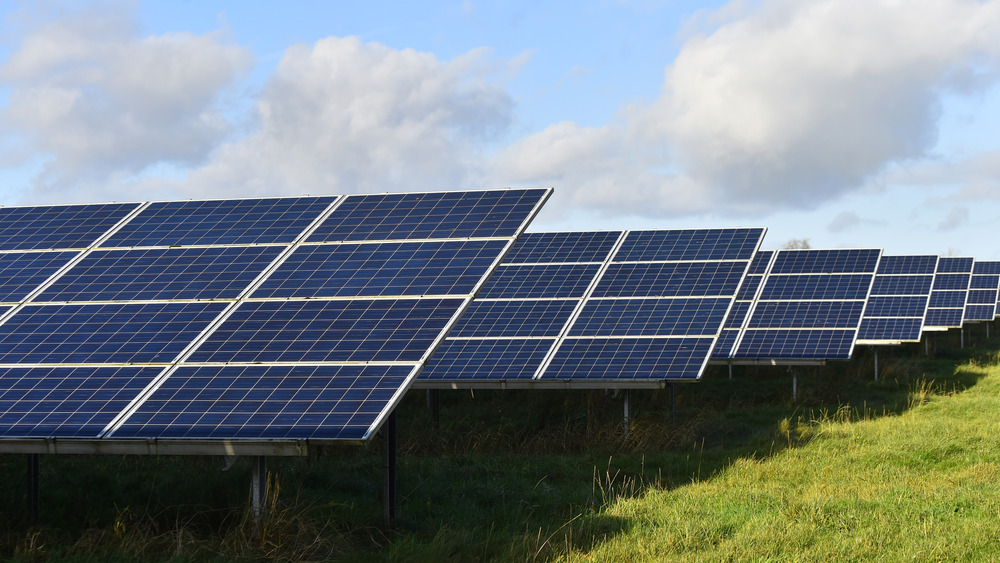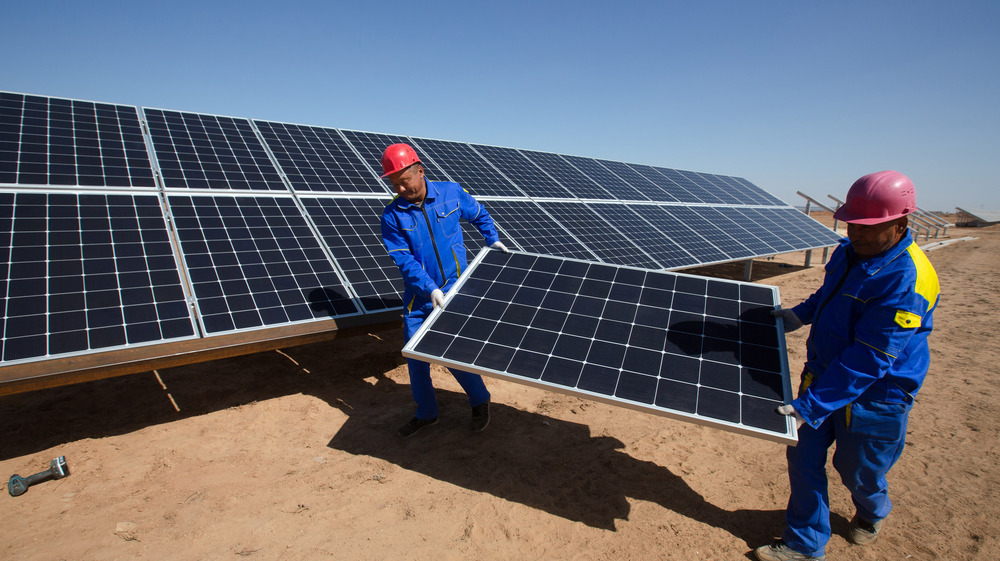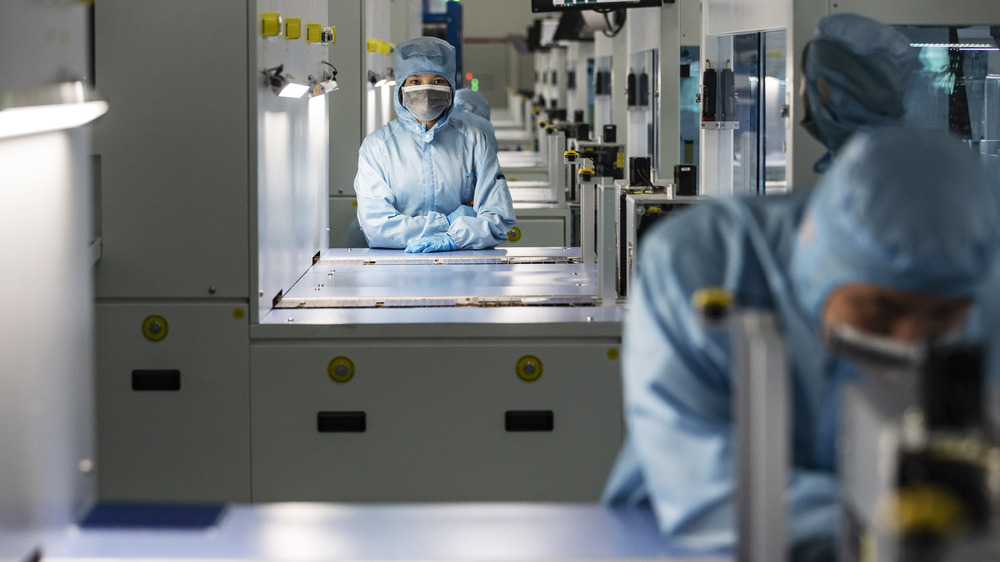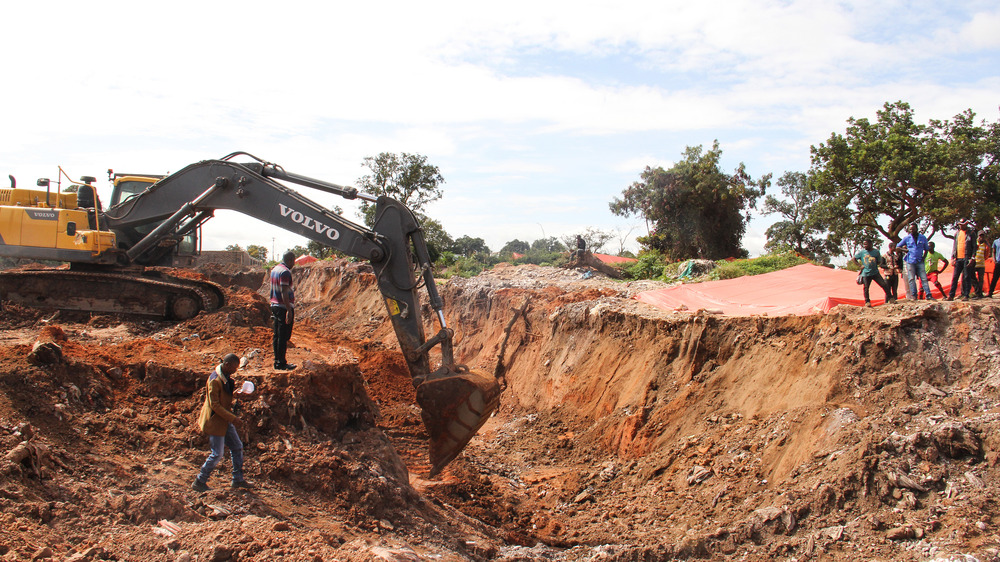The Unfortunate Truth About Solar Panels
As the world progressed from the comparatively dark ages of the Industrial Revolution to the scrambling-to-fight-climate-crisis days of the present, several amazing advances were made in the field of alternative energy. One of the most prominent is solar panel technology. Humans have become a race akin to minor gods who can harness the fearsome power of the Sun and, you know, use it to charge our iPads, power our toasters and keep the air conditioning at a perfect 72 degrees per our parents' requests. If we're lucky, solar panels could prove one of several pieces that allow us to move away from the atmosphere-poisoning fossil fuels we've been dependent upon for the last century and a half.
Along with wind, water, and nuclear power, we've seen solar farms crop up across the world. Production has reached an all-time high, subsidies for solar installation have been implemented in certain states, and we're just a hop, skip, and a jump away from these blackened panels appearing on every rooftop in the country. Yay! But what if solar panels weren't as perfect as we're often led to believe? The unfortunate truth is that this technology still has a few major issues to work out, both environmentally and ethically.
Current solar panel production isn't sustainable
Solar panels, like much of our modern technology, rely on certain resources, such as silica sand, several precious metals, and tellurium. According to Scientific American, the solar panels currently out there use about 40% of Earth's current tellurium supply while using roughly 15% of our silver supply and competing with a wide array of technologies for the other aforementioned resources. That's not exactly a production scheme we can keep up with at our current pace, and if solar power's popularity continues to rise, we'll be out of tellurium before we know it.
To make matters a little bit dirtier, with production comes waste. It's no fun to hear that the technology we've collectively created to help clean up our (currently) one and only world is also making a mess all over it, but that's the truth of the matter. As Forbes points out, the International Renewable Energy Agency estimated that solar panel production produced about 250,000 metric tons of waste alongside its main product. The agency also estimated that we'd be swimming in roughly 78 million tons by the end of 2050 if things continue on the way they're going. If that weren't enough, those coveted solar panels can leech toxic wastes, such as lead and cadmium, into soil via rainwater. So is there anything we can do about this growing problem while still benefiting from solar energy? Why, yes — yes, there is.
Recycling could set the problem straight
Since photovoltaics and solar energy are a fairly new industry, there's still time to work out the kinks before everything goes to environmental hell in a Sun-shaped handbasket. A solar expert speaking with National Geographic estimated the first major wave of solar panel death — when the panels outlive their lifespan and need a good replacin' — should happen within the next decade, and this presents an optimal opportunity for putting the outdated tech through the recycler.
The key to reducing waste and preventing the exhaustion of necessary resources, as Scientific American mentions, is a closed-loop circular economy that takes the older solar panels, metaphorically grinds them up, and uses their component resources to produce the new ones. Otherwise, we'll easily run out of these mined elements and drown the world in trashed photovoltaics.
Most of the major solar tech companies are working on it, with European photovoltaic producers leading the charge. Those lovely Europeans have been recycling their panels under an industry-wide directive since 2014, and the United States is starting to catch on as well. Though there's no federal regulation for solar tech waste and recycling here, a few states, such as New York and Washington, already require photovoltaic manufacturers to take care of their trash, but we're still struggling. The problem is with the lack of financial viability in recycling solar panels, and you know how much we value money here. Every dime is worth more than the air we breathe.
Not all solar panels are ethically produced
Alternative energy is necessary if we don't want to see the world fall into further climate crisis. Even if that weren't the case, fossil fuels will eventually deplete at the rate humanity burns through them. But that doesn't mean we should sacrifice the rights of others for the sake of green technologies, and it seems that might be what's happening in some cases of solar panel production whether local companies recognize it or not.
The Business & Human Rights Resource Centre details a recent study on the production of solar panels in China, where it was revealed that parts of the supply chain for several major Chinese polysilicon producers showed strong signs of using forced labor. Specifically, using forced labor by one of the country's vulnerable ethnic populations, the Uighur minority, as The New York Times notes. Obviously that's a serious problem. You might be thinking "That's bad, but at least it's across the pond." Not exactly.
The publication also points a third of all solar panels worldwide use polysilicon from these companies. Yes, that includes Europe and the United States. There's a decent chance your home solar array was at least partially produced with modern-day slave labor, and that's not something anyone wants.
It's important to note that a Chinese embassy spokesperson claimed these accusations were simply rumors and nothing more, but we're not so sure.
The batteries might not be any better
If you don't already know, solar panels are basically worthless without batteries. Since the Sun is only out for an average half-day, that leaves another half of the day for your lights to go out and your refrigerator to stop running. (Cue the prank phone calls.) In order to retain power through the night, the excess wattage produced by solar panels is collected in some type of deep-cycle or lithium battery bank, such as the oh-so-popular lithium ion Tesla Powerwall. There's a problem though: Some of the elements mined for batteries can come from pretty gross beginnings.
According to Greentech Media, roughly half of the world's cobalt, one of the necessary ingredients in all lithium batteries, is mined out of the Democratic Republic of Congo — we're talking about millions of metric tons here — where in 2017 it was estimated that over 40,000 children were working the mines. Child labor is a tragedy, and one risk assessment company, Verisk Maplecroft, has deemed the DR Congo to be an "extreme risk" for not only child labor but dangerous working conditions and slave labor. What does that mean for solar batteries? Well, in 2019 Tesla was among the many major companies named in a lawsuit for using child-labor-produced cobalt, so there's a good chance lithium solar batteries are as disgusting as every other lithium battery. And, if companies aren't careful, the social abuses of solar tech production could outweigh any green benefits the product might have.




